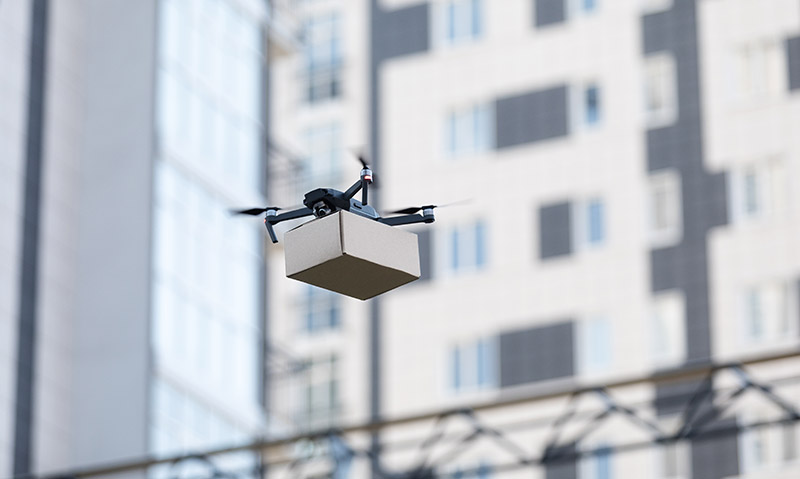The material handling industry is evolving rapidly as warehouses and distribution centers adopt advanced solutions to meet escalating consumer expectations and overcome challenges like labor shortages, sustainability, and efficiency demands. Below are some of the prominent trends that are redefining the landscape of material handling in 2024 and beyond.
1. Automation and Robotics
One of the most transformative trends in material handling is the adoption of automation and robotics. Automated Guided Vehicles (AGVs), Autonomous Mobile Robots (AMRs), and robotic picking systems are becoming standard in warehouses to speed up tasks, reduce errors, and improve safety. These technologies, combined with warehouse management systems (WMS) and warehouse execution systems (WES), enable optimized workflows and a more flexible response to changing demands.
2. AI and Predictive Analytics
Artificial intelligence (AI) and machine learning are being leveraged to predict inventory needs, identify maintenance schedules, and optimize routes for material movement. Predictive analytics helps companies anticipate peaks in demand and preemptively adjust resources, reducing downtime and maximizing throughput. Additionally, AI-powered demand forecasting is helping material handlers make informed inventory decisions, which are crucial in high-turnover industries like e-commerce.
3. Sustainability and Energy Efficiency
The focus on sustainability has intensified in the material handling sector, with many companies working to minimize environmental impact. Electric and hybrid-powered forklifts are now preferred over traditional internal combustion options to reduce emissions. Battery technology is advancing, with lithium-ion and other high-efficiency batteries offering longer runtime and faster charging. Recyclable packaging and eco-friendly materials are also gaining traction, enabling companies to reduce waste along the supply chain.
4. Internet of Things (IoT) and Connected Devices
IoT technology in material handling allows real-time tracking and monitoring of assets, including equipment, pallets, and inventory. Connected devices can track the performance and condition of forklifts, conveyors, and other equipment, notifying operators of potential issues before they result in downtime. This data enables preventative maintenance and supports a connected and efficient workflow across the warehouse.
5. Flexible and Modular Solutions
To adapt to changing order volumes and SKUs, companies are turning to flexible and modular material handling systems that can be quickly reconfigured. Modular conveyors, shelving, and mobile racking systems allow facilities to scale up or down as needed, supporting the dynamic demands of today’s e-commerce-driven market. These solutions are also cost-effective, as companies can add or remove components as required without substantial reinvestment.
6. Workforce Augmentation through Technology
In response to labor shortages, companies are exploring ways to make jobs easier and more appealing. Wearable technology, such as exoskeletons and smart glasses, augments workers’ physical abilities and access to information, reducing strain and helping with training. Augmented reality (AR) and virtual reality (VR) are also being used to enhance training programs, allowing employees to practice tasks in a simulated environment before handling real products.
7. Micro-Fulfillment Centers and Urban Warehousing
With the growth of same-day and next-day delivery demands, businesses are moving closer to urban centers through micro-fulfillment centers and dark stores. These smaller, localized warehouses allow companies to fulfill orders faster and closer to the end customer. By utilizing automation within these urban facilities, companies can also maximize space and increase efficiency, meeting high-speed delivery expectations.
8. Blockchain for Transparent Supply Chains
Blockchain technology is being explored for enhancing traceability and transparency across supply chains. By recording transactions and item movements securely, blockchain provides an immutable record that can be traced back to each stage of the product journey. This increased visibility helps identify bottlenecks, manage recalls more effectively, and provide customers with accurate information about their orders’ origins.
9. 3D Printing for Customization and Spare Parts
3D printing is gaining popularity as a solution for on-demand production and customization, especially for spare parts. Warehouses can reduce inventory levels by printing parts as needed, which is especially valuable for older equipment that may have hard-to-source parts. Additionally, 3D printing allows for customized packaging and products, enhancing customer experience while reducing waste.
10. Enhanced Safety Solutions
Warehouse safety continues to be a priority, and companies are turning to advanced safety solutions. Wearable devices and sensors can monitor workers’ physical conditions and alert supervisors to potential hazards or overexertion. Additionally, automated safety features in forklifts and conveyors, such as collision avoidance and automatic braking, are helping reduce workplace accidents.
Conclusion
As material handling becomes increasingly sophisticated, companies that adopt these trends will be better positioned to handle the challenges of a modern, complex supply chain. Automation, connectivity, and sustainability are not just enhancements but essentials for businesses aiming to stay competitive in a rapidly evolving market. By investing in these advancements, companies can enhance their operational efficiency, meet customer expectations, and move toward a more sustainable future.



